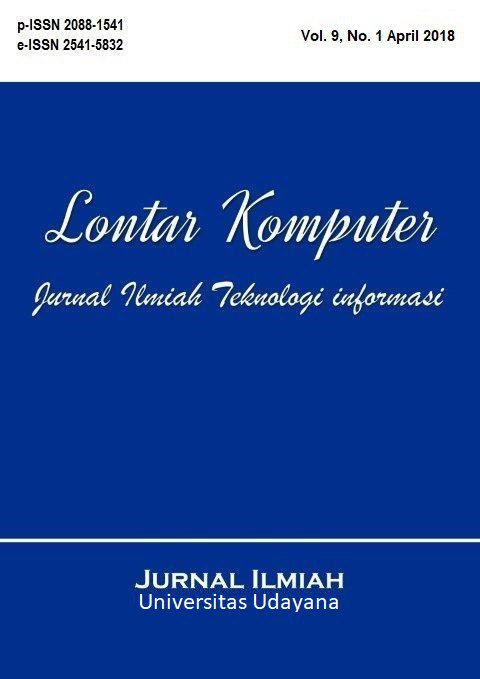Library System Using Radio Frequency Identification (RFID) and Telegram Bot API
Abstract
Libraries as a service provider to the user that needs fast, easy, and efficient services. Optimization of the services performed by the application of information technology such as utilizing barcode technology for the library system. Along with the development, there were some shortcomings in the use of barcode technology. Barcode technology can be replaced by RFID (Radio Frequency Identification) in order to further improve the operational and library services. RFID has some advantages over the barcode system is the possibility of data can be read automatically without regard to alignment readings, past the non conductor materials like cardboard paper with access speeds of several hundred tags per second at a distance of several meters. The advantages and capabilities of RFID can be applied in a library system in the inventory, self-service, and security so as to generate optimal library services more than manual systems or even a barcode system. Utilization of RFID technology in the library and then combined with technology Telegram Bot API as a medium to facilitate user access such as notification, accessing history, and others.
Downloads
References
[2] Deepashree Mehendale and Reshma Masurekar, "A Comparative Study of Different Technologies for Electronic Toll Collection System", IJIRCCE, vol. 4, no. 2, p. 1537, 2016.
[3] I Putu I Permana, I Ketut G Darma Putra, and I Gusti M A Sasmita, "Rancang Bangun Sistem Pilkades Menggunakan Teknologi Smart Card Sebagai Kartu Pemilih", LONTAR KOMPUTER, vol. 7, no. 2, p. 87, 2016.
[4] Ahmad Hanafi, I Made Sukarsa, and A.A. Ketut Agung Cahyawan Wiranatha, "Pertukaran Data Antar Database dengan Menggunakan Teknologi API", LONTAR KOMPUTER, vol. 8, no. 1, p. 24, 2017.
[5] Nikhil Gudla, Sai Kalyan Paladagu, A Wahid Khan, and Raja Venkata Satya Phanindra Chava, "The Student Tracking Using RFID Technology", International Journal of Applied Engineering Research, vol. 11, no. 1, p. 174, 2016.
[6] Jayalakshmi J and Ambily O A, "Vehicle Tracking Using RFID", International Journal of Engineering Research and General Science, vol. 4, no. 2, p. 370, 2016.
[7] Trupti Lotlikar, Rohan Kankapurkar, Anand Parekar, and Akshay Mohite, "Comparative Study of Barcode, QR-code and RFID System", IJCTA, vol. 4, no. 5, p. 819, 2013.
[8] Lamia H. Khalid and Manal F. Younis, "Development of a Message-Oriented Middleware for a Heterogeneous Distributed Database Systems", Journal of Al-Nahrain University, vol. 14, no. 4, p. 235, 2013.
[9] Danilo H. F. Menezes, Marco T. Chella, and Hendrik T. Macedo, "A Client/Server Message Oriented Middleware for Mobile Robots", JOURNAL OF SOFTWARE, vol. 7, no. 45 p. 1156, 2012.
The Authors submitting a manuscript do so on the understanding that if accepted for publication, the copyright of the article shall be assigned to Jurnal Lontar Komputer as the publisher of the journal. Copyright encompasses exclusive rights to reproduce and deliver the article in all forms and media, as well as translations. The reproduction of any part of this journal (printed or online) will be allowed only with written permission from Jurnal Lontar Komputer. The Editorial Board of Jurnal Lontar Komputer makes every effort to ensure that no wrong or misleading data, opinions, or statements be published in the journal.
 This work is licensed under a Creative Commons Attribution 4.0 International License.
This work is licensed under a Creative Commons Attribution 4.0 International License.























